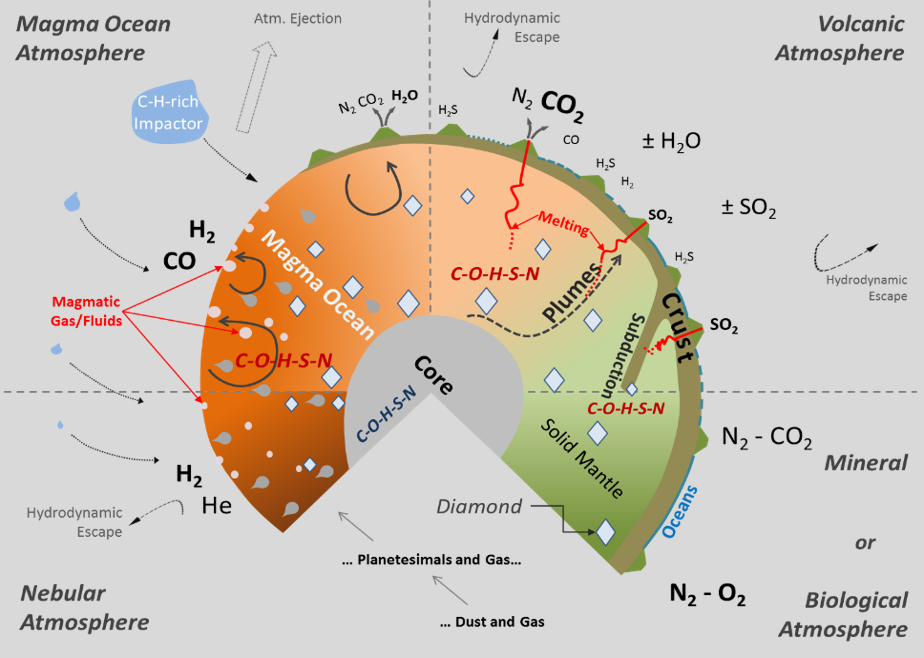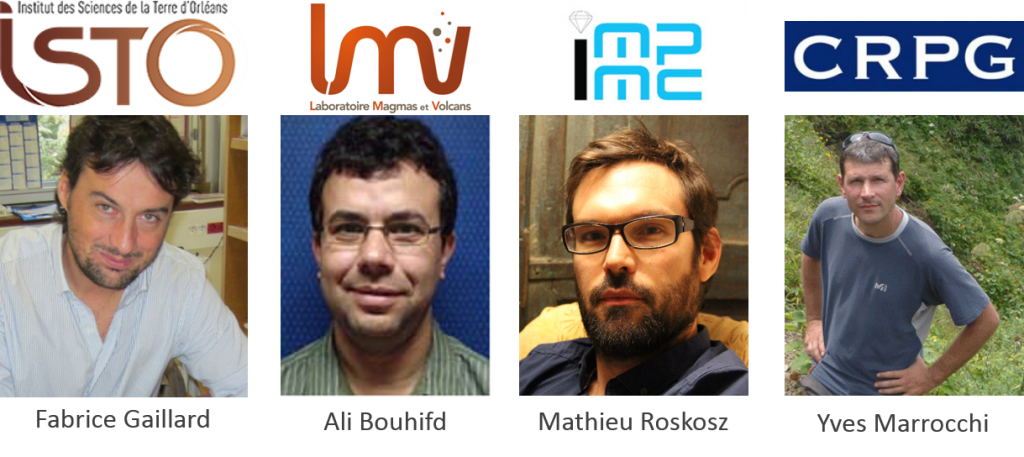
GASTON
Date de début : 10/01/2018
Date de fin : 02/31/2023
Numéro de contrat
ANR-18-CE31-0021-01
Durée de projet
48 + 6 months
Financement
ANR
Montant
217 k€ (ISTO)
Coordinateur : Fabrice Gaillard
Partenaires :
Magmas & Volcanoes Laboratory (LMV),
Centre de recherche pétrographique et géochimique (CRGP),
Institut de Minéralogie, de Physique des Matériaux et de Cosmochimie (IMPMC)
Magmatism is an enduring process marking the history of terrestrial Planets. From the earliest magma to the present-day volcanism, a variety of processes have involved the so-called volatile elements: carbon, hydrogen, nitrogen. How these volatile elements were processed during these magmatic events remained poorly known. The GASTON project gathers a group of scientists from the laboratories of Orléans, Clermont-Ferrand, Paris and Nancy, working on the geochemistry of volatiles in magma. This consortium makes available state-of-the-art experimental and analytical equipments for the study of volatiles in Magma.

In addition to the stability of liquid water, the availability of the volatile elements (C-O-H-S-N), which dominate surficial biochemical, climatic, and geochemical processes, is crucial. Isotopic constraints indicate that the major part of these elements were incorporated into Earth during the accretion stage. We may postulate that this is at least partly the case for other terrestrial planets. In that case, these volatile elements have been processed through different stages of planetary differentiation, all of which involving magmatic processes: the magma ocean, where the core formed leaving a residual mantle; the convective solid mantle where partial melting occurs yielding the crusts; the degassing of magma forming the atmosphere(s).
GASTON associates French researchers working on the behaviour of magmatic volatiles, who will address the fate of C-O-H-S-N elements during this sequence of differentiation events marking the Earth’s construction (see figure below). How the C-O-H-S-N elements partition during core-mantle equilibration, during mantle melting or during basalt degassing and what sort of isotopic signature can be expected constitutes the so far poorly addressed topics that GASTON will tackle.
Magmatism, Volatiles and the Ages of the Earth
GASTON associates researchers in French laboratories working on the behaviour of magmatic volatiles at all these stages. They will address the fate of C-O-H-N elements during this sequence of differentiation events marking the Earth’s construction. How the C-O-H-N elements partition during core-mantle equilibration, during mantle melting or during basalt degassing and what sort of isotopic signature such processes may have left in the present geological records constitutes the poorly known topics that GASTON will tackle.
The consortium proposes to gather their unique sets of experimental and analytical facilities to produce: (i) samples from sophisticated experiments in a poorly explored range of (high)pressure-temperature-redox conditions. (ii) these samples will then be analysed using state-of the-art measurements of light elements at high spatial resolution and sensitivity. (iii) in situ lab measurements (at pressure and temperature) will be deployed to monitor magmatic degassing and volatile speciations. These are challenging tasks, but the project achievability is either demonstrated by previous work led by the consortium or by fall-back solutions involving alternative measurements remaining innovative.
Overall, GASTON will provide the first quantitative constraints on the fate the volatile elements during magmatic processes from the earliest Magma Ocean to the present-day volcanism. Are volatiles always volatile or can they become refractory and sequestrated in the deep planetary interior? The long-term purpose of GASTON is linking two domains of research : the geochemistry of the Earth and planetary interiors to the concept of habitable worlds. A strategy of dissemination and communication is planned to fulfil this long-term ambition. In order to start this initiative, GASTON received from the ANR funding for two engineers (tot 35 months) that will be working at Orléans and one postdoctoral research associate (24 months) that will work at Clermont-Ferrand, in addition to consumables for the experimental and analytical costs.
Contact: fabrice.gaillard@cnrs-orleans.fr


